I've recently travelled to Korea. While most of Europe has allowed quarantine-free travel, most visitors to Korea must undergo mandatory quarantine. And, without a long term visa or residency status, this must be done in a government facility. I found it difficult to find all the information I needed to fly because it was in a lot of different places and people publishing blogs had different experiences to me, so here's my take.
Before Flying
I was travelling from the UK and luckily the UK is under a visa waiver programme with Korea. However, I did need to register for an electronic travel authorisation before I flew (K-ETA). This had a small cost and was processed in less than an hour from the government's website.
The second thing I needed before flying, like most travel these days, was a negative PCR test result. Korea is very particular about the test types they require and the certificate and this is all set out in this information page. I got my test on a Monday and flew out on a Thursday. Although I was worried about there being delays to my PCR test processing, it was performed very quickly and I had my result in less than 4 hours using the Southampton Airport PCR test service (the nearest test centre to where I was living before flying from London Heathrow).
When you fly to Korea, you do not need to register or book the quarantine in advance of flying. I turned up and went straight to the government managed hotel quarantine centre with a the shuttle bus service provided from the airport. I'll give more information about this later.
On arrival you will need to provide contact details of where you will be staying (after the quarantine). If you have a Korean friend, you can use their number (but check with them first). Otherwise, you can purchase a pre-paid SIM card which you can collect from the airport. But this needs to be purchased 24 hours before arrival.
My primary piece of advice would be to print a couple of copies of all documentation (including the PCR test and K-ETA form). Paper copies are mandatory on arrival in Korea and you don't want to be stuck! Bring a pen too!
Taking off from London Heathrow
When checking-in to my flight, a boarding pass could not be issued by my airline until I had undergone a document check before flying. I flew with Lufthansa and while they do have an electronic document verification, I didn't have all the information I needed before my flight. Instead, I had to go to a check in counter instead of the self bag-drop and the check-in assistant went through all my paperwork before the boarding pass was issued.
Before Landing
On the flight, the attendants provided all the required paper forms needed for arrival including the health declaration, travel declaration, customs declaration and landing card. There's plenty of forms to fill out which will keep you busy in the last hour of your flight.
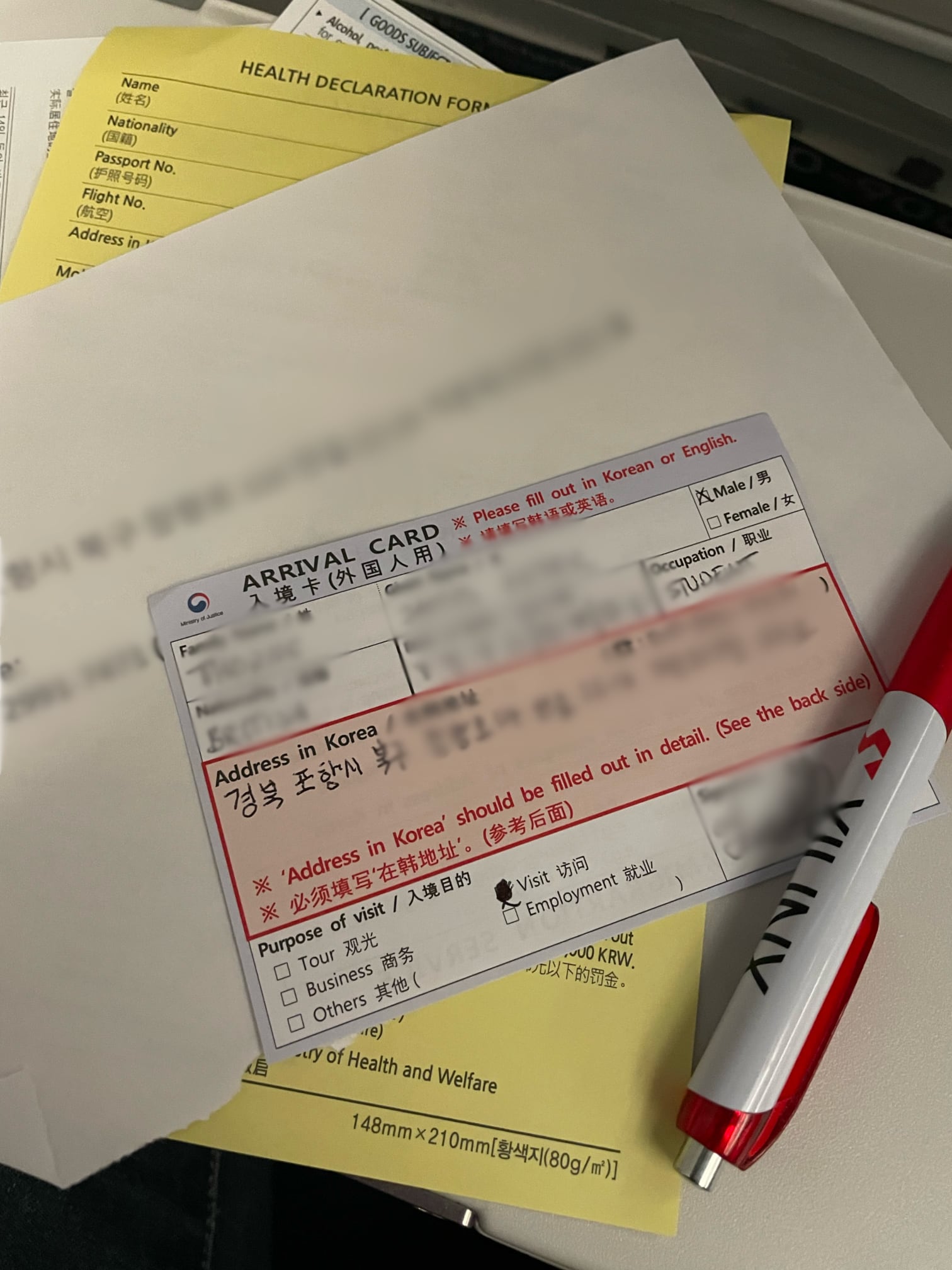
Landing at Incheon Airport
After landing at Incheon airport from an international flight, all passengers will have to queue to go through an initial health screening. There's a pretty large queue for this and depending on how many flights arrive at the same time there could be some wait. For me this took 45 minutes. I wasn't really worried though as I was about to spend the next 10 days in a quarantine hotel and this time meant that there was one less hour I needed to spend in solitary confinement.

Near the front of the queue, there's a number of signs describing the quarantine procedure and copies of
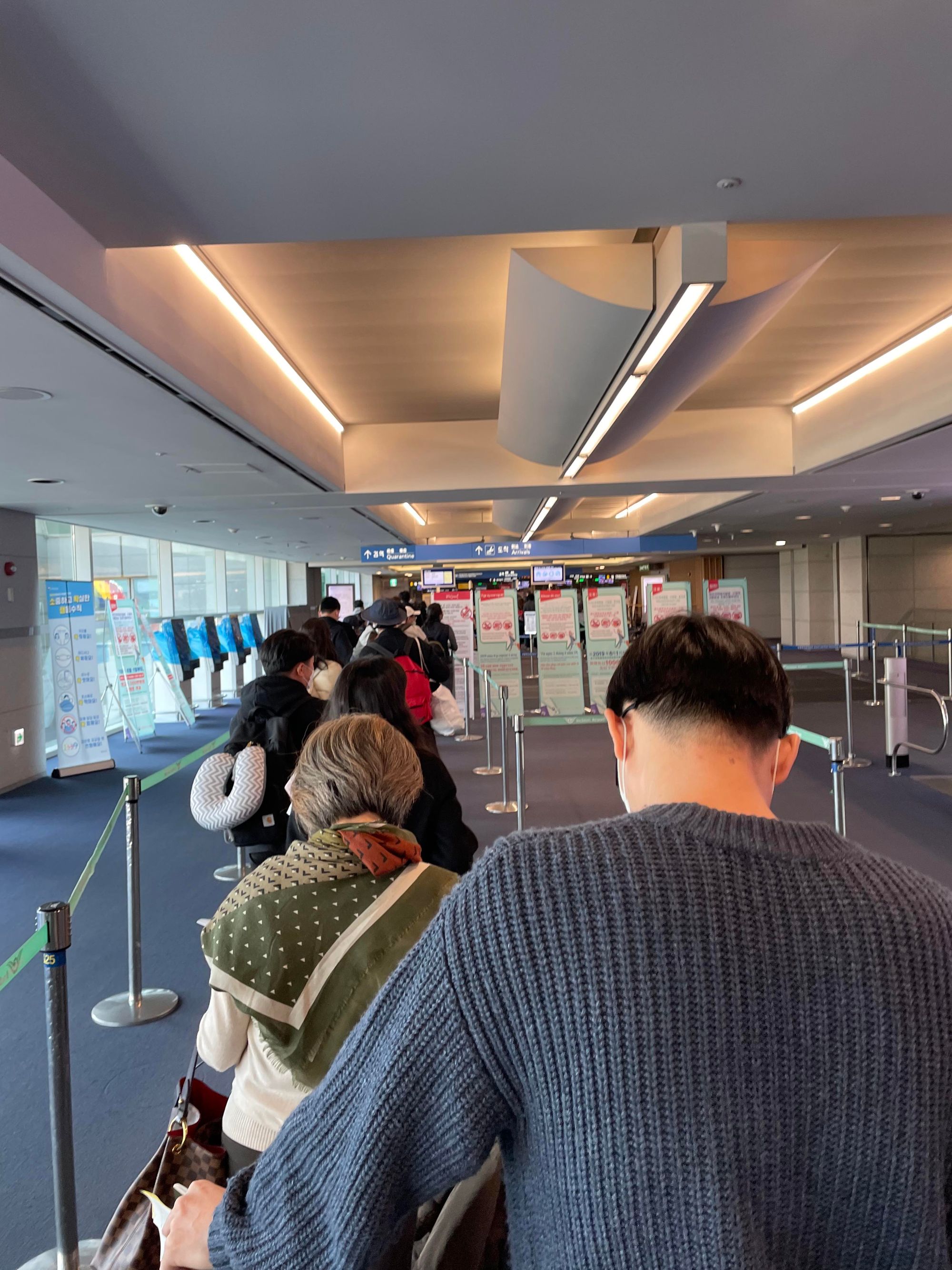
At the end of the queue is an initial document screening. You submit some of the paper forms and health declaration as well as provide a copy of your paper PCR test certificate. Once you've passed this health screening, your passport will be given a sticker and you can then proceed to the main arrivals area of the terminal.

In the main arrivals area of the terminal, I picked up the SIM card I ordered and used the bathroom before continuing to the immigration desks. At the immigration desks, I gave my passport and the printed copy of the K-ETA to the immigration assistant who then gave me a tag to wear for the next station. The immigration is completed in three steps. The first step required me to install a quarantine tracking app on my phone and they checked that the contact number I had provided was valid by calling my contact in front of me. The second first step was at the immigration desk and was the confirmation of visa status and the final step was about my quarantine status. These were handled at three separate desks.
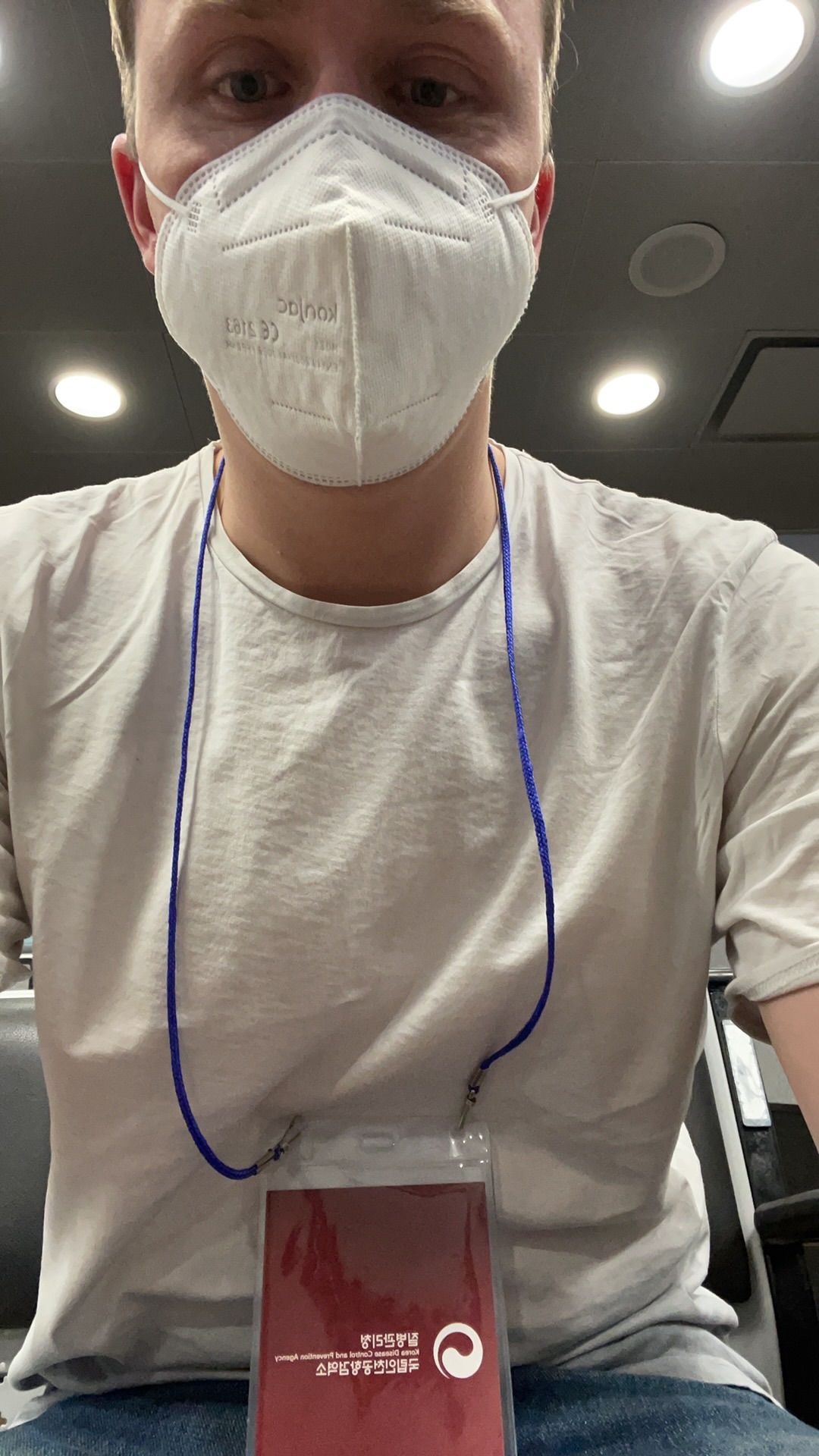
For the tag, it seemed like there was two colours: yellow and red. I was the red type as I arrived on a tourist visa exemption (B1 type) and had to go to a secondary area to sign some forms consenting to undergo government quarantine and receive an official order from the health office to quarantine. From what I saw, the people with the yellow tags had other arrangements and weren't going to the government quarantine centre. In the secondary area, the staff were very friendly and things were resolved fairly quickly.
After Immigration
After the immigration desk was completed, I could collect my bag and then proceed through customs area. I still had to wear this tag until I got on the bus to the quarantine centre. After customs, I was able to access some facilities in the arrivals area and go to a small convenience store to buy snacks. Some of the snacks I bought needed a microwave so this meant that I couldn't eat them at my quarantine hotel. Choose wisely!
I had to wait about 15 minutes for enough people to come through the airport and once there was a group of 6 or 7 of us, were paraded through the airport to a secondary area preparing us for the bus. There was a very strong surveillance and police presence in the airport and all the doors were protected. You only have one choice, and that's to get on the officially provided transport.
On the bus
You don't know which quarantine centre you'll be going to until you're on the bus. My quarantine centre was in Gimpo, about 30 minutes away from Incheon airport and closer towards Seoul. When we got the quarantine centre, we had to wait a short time before being allowed in the hotel.
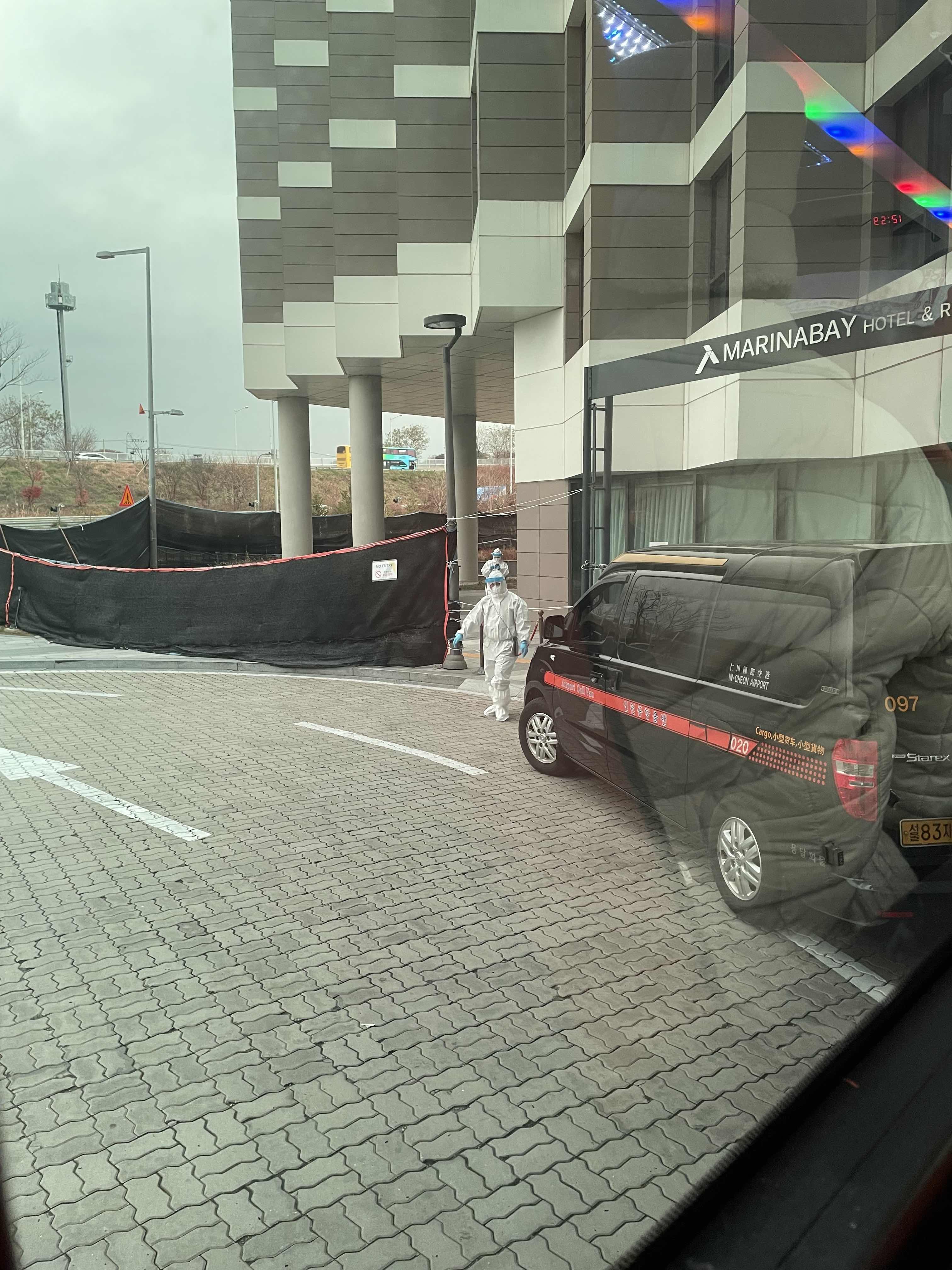
The check in at the hotel was simple, we all arrived into one large room where we had an initial health screening, installing an app, and completing a form. We took the form to a doctor who then allowed us to proceed to the next area of the hotel.
In the next area of the hotel, we had to pay for the cost of the quarantine. This varies from hotel to hotel and you don't know how much it will cost until you arrive. For me, cost 120,000 KRW per night: 1,200,000 KRW (£770) in total. I could pay using my British debit card. They also gave us a cup ramen noodle snack and the key to our room after paying.
In the room
This is where 10 days get condensed into a couple of paragraphs. The routine at the hotel is fairly simple: you get three meals a day, take a temperature test every afternoon and have a PCR test on the day after you arrive and the day before you leave. I arrived on the December 2nd (12/2 mid-morning) and I was able to check out at midnight on the 12th of December (12/12 00:00). This meant that I spent just under 10 days in the quarantine as the first day of your arrival counts towards this time.
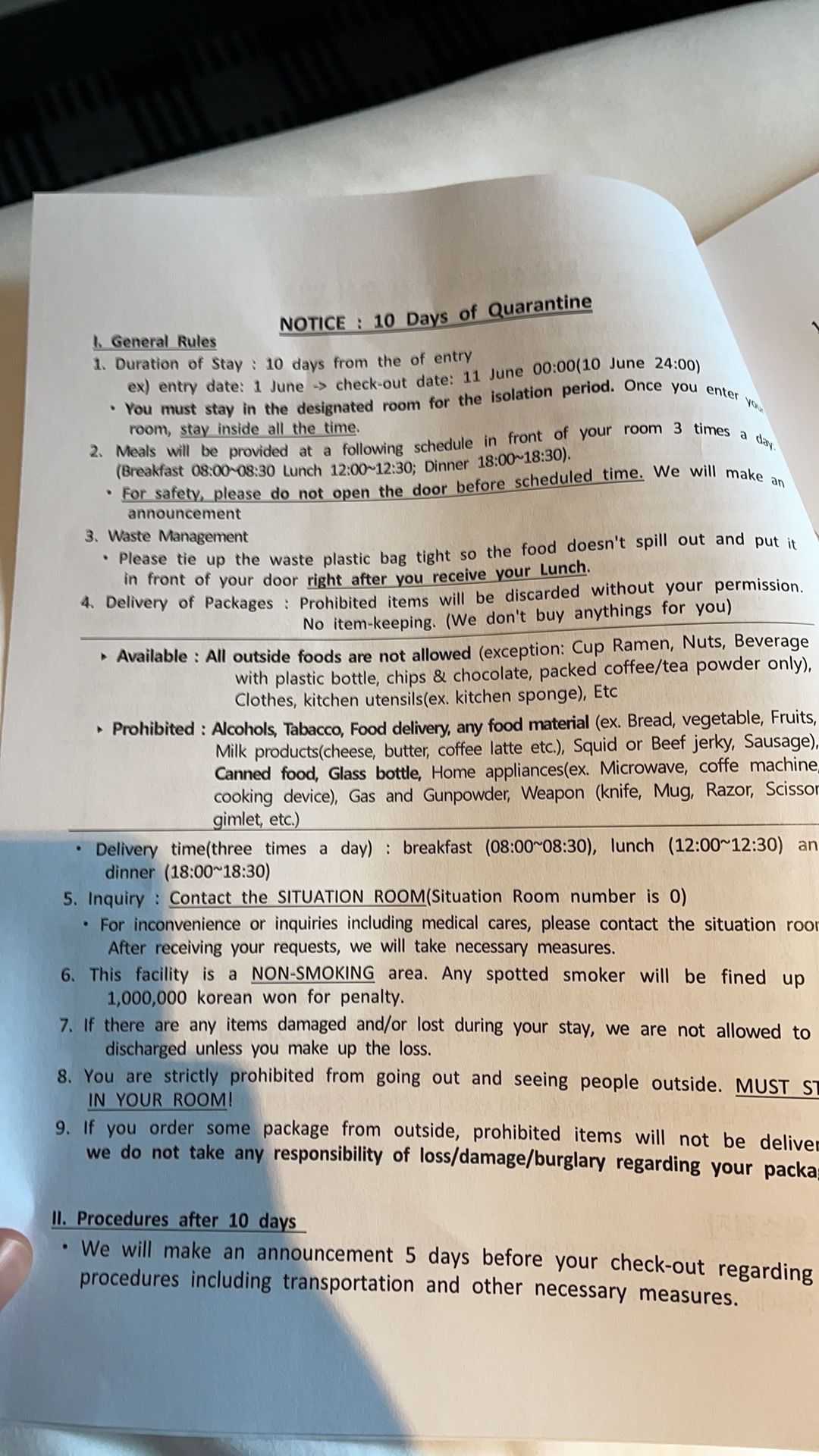
If you order deliveries to the hotel (not hot food), it will be delivered to your room at the next meal time. You can call the frontman to get other items delivered to the room such as water bottles. The hotel will give you 2L per day and 4L on your first day. There's a kettle for boiling water too.
The main downside of the hotel is that the food may be cold by the time you have your meal. While this is OK for some types of food, it can be pretty monotonous and make some food taste bad. By the end of the experience, I was craving something warm. While they do give cup ramens as a snack with some meals, I didn't eat these.
When checking out, you have a few options. You can either be picked up by a friend or taxi at a specified time, or use the shuttle provided by the government. This is the option I had on my check out form.
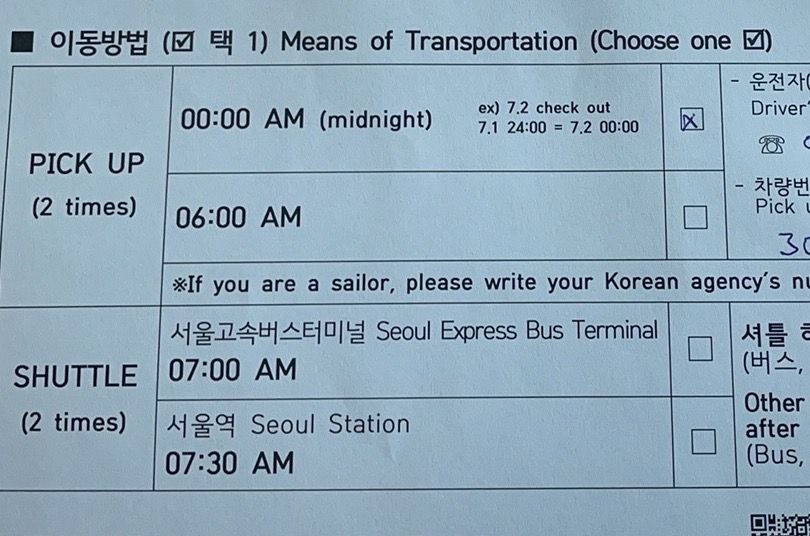
Enjoying my time in Korea
After checking out of the quarantine, I was able to enjoy my time in Korea. While I had a lot of questions and anxiety before flying to Korea because of all the regulations and different information, it wasn't as hard as I thought it would be. I hope that if you plan to visit, this guide will help you with any questions you may have. Please feel free to message me on Twitter @j6mes or Instagram @jp.thorne if you have any questions or things I should add.
